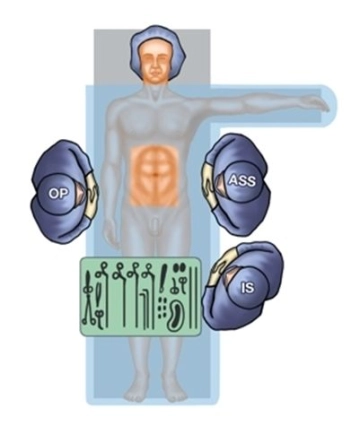According to the guidelines of the EHS and AHS, the open sublay technique is an option for the treatment of primary and secondary abdominal wall hernias with defects between 4 and 10 cm.
With a retromuscular mesh positioning behind the rectus abdominis muscle, this technique is particularly suitable for midline defects.
In the situation of incarceration, depending on the degree of contamination, treatment with a synthetic mesh is indicated only with great caution.
The demonstration of the retromuscular layer as an optimal mesh bed has led to a renaissance of the open sublay procedure in incisional hernia surgery in recent years.
The sublay technique describes a retromuscular preperitoneal position of the mesh, ideally involving a midline reconstruction with closure of the fascia over the mesh. This achieves a good mesh support, with the intra-abdominal pressure on the mesh acting as the strongest component of the closure and supporting its fixation.
In principle, the indication for the repair of an abdominal wall hernia is always given, as the hernia gap and extra-abdominal organ volume will usually continue to enlarge. In larger defects, ventral stabilizing elements of the trunk musculature are lacking. Physically demanding activities and sports may be severely restricted to impossible.
The only exception is an incidental finding in the context of cross-sectional imaging for other reasons. In the absence of symptoms, there is not necessarily an indication for surgery.


